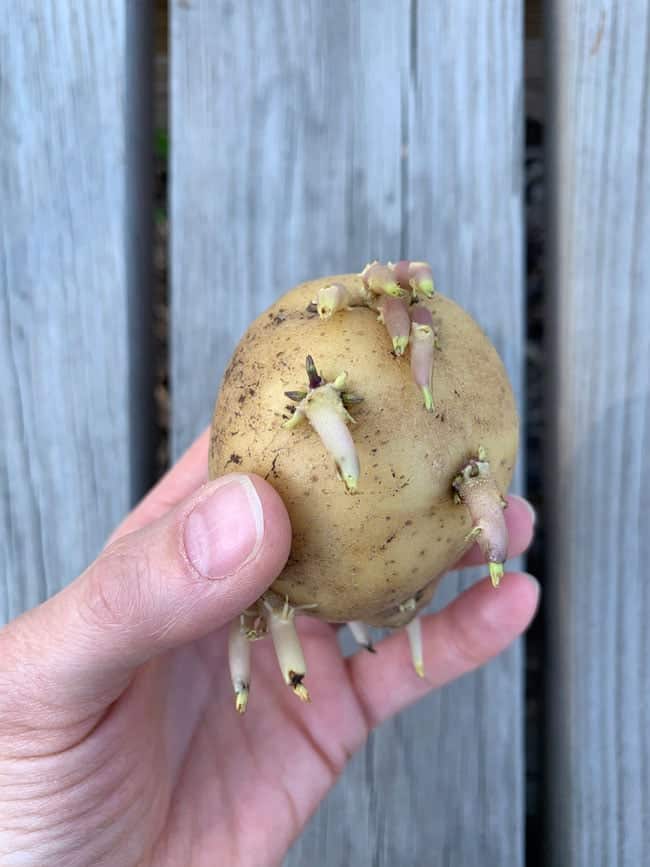Discover the Joy of Growing Potato Sprouts with Your Little Gardeners!
Hey there, amazing parents! Are you ready to embark on a fun-filled gardening adventure with your kiddos? Growing potato sprouts is not just an exciting activity; it’s also an educational one. It instills a love for nature while teaching patience and responsibility. Plus, it can be a delightful project to welcome the spring or any other season. Best of all, you don’t need a huge garden – a small pot on a sunny windowsill will do. Let’s dig in and get our hands a little dirty (but in the best possible way)!
What You Need to Get Started
- Potatoes: Choose organic potatoes for the best results. Look for small eyes or buds forming.
- Container: Any pot or box will do, just ensure it has good drainage.
- Soil: A mix of garden soil and compost works well for nourishing your sprouts.
- Water: Keep soil moist, but not waterlogged to encourage healthy sprout growth.
- Sunlight: A sunny spot where your potato has access to plenty of light is key.
Step 1: Select The Right Potato
Start off your sprouting journey by selecting the right potatoes. Encourage your kids to help pick out a few healthy-looking potatoes with ‘eyes,’ or little shoots, as these will become our potato sprouts. Organic potatoes are less likely to have been treated with sprout inhibitors, which can affect growth.
Step 2: Cut and Cure Potatoes
Next, we’ll need to prepare the potatoes for sprouting. If your potatoes are large, you can cut them into pieces, each with one or two eyes. Small potatoes can be left whole. Then, let those pieces sit in a cool, dry place for a few days. This process, called curing, allows the cut sides to form a callous, which helps prevent rotting when planted.
Step 3: Chit the Potatoes
Chitting is a fancy term for pre-sprouting potatoes. Place the potato pieces eye-side up in an egg carton or tray. Set them in a bright, cool place, but out of direct sunlight, for about two to four weeks. This encourages the eyes to develop into sturdy sprouts before planting. Your children can observe daily and keep a growth diary!
Step 4: Preparing Your Container and Soil
While our potato pieces are chitting, let’s prepare their future home! You can grow potatoes in pots, buckets, or even special grow bags. Ensure your container is clean and has holes at the bottom for water to drain through. Mix your soil with some compost to give your sprouts the nutrient boost they’ll crave.
Planting and watching potato sprouts grow can be a wonderful opportunity for family bonding. Every step in this process is a learning moment for your children, filled with anticipation and wonder. As the days go by, the sprouts will emerge, and your little ones will be amazed at the transformation from a simple potato into a plant producing new potatoes that everyone can enjoy!
Stay tuned for the next steps where we’ll learn how to plant the sprouted potatoes, care for them, and eventually harvest. It’s a wholesome journey that combines learning, fun, and the eventual enjoyment of your very own, homegrown potatoes. So, grab your garden gloves, a sprinkle of enthusiasm, and let’s get growing!

5 Essential Tips for Preparing to Grow Potato Sprouts
1. Engage your Little Ones
Gardening is a wonderful activity for the whole family, especially when it comes to the excitement of waiting for those first green shoots to appear. Involve your children in every step, from selecting the right potatoes to monitoring the sprouting process. Encouraging their natural curiosity will lead to a more engaging and memorable experience for them.
2. Choose the Right Variety
Not all potatoes are created equal when it comes to sprouting. Some varieties are better suited for growing in containers, while others flourish in the ground. Do some research with your kids to find which variety might work best for your setup and climate. This can be a great way to teach them about different types of potatoes and how plants adapt to their environments.
3. Safety First
As with any family activity, safety is key. Make sure the area where you’re cutting and curing your potatoes is safe for children. Keep knives and other sharp tools out of reach, and always supervise any cutting closely. It’s also important to wash hands after handling potatoes, as they can carry bacteria from the soil.
4. Patience is a Virtue
Growing potatoes from sprouts is not an overnight job. It’s a slow and steady race that can teach your children the value of patience. Use the waiting time to talk about how plants grow and what they need to thrive. Each day’s small changes can be a source of big excitement!
5. Document the Journey
Encourage your kids to keep a gardening journal or diary. They can draw pictures of the potato sprouts as they grow, note down changes, or even write about what they think the plants need to grow faster. This not only serves as a learning tool but also a lovely keepsake to look back on.
Final Thoughts on Growing Potato Sprouts
Gearing up for your potato growing adventure can be just as exciting as the planting itself. Preparing for the process teaches planning and organization, while actual growth provides lessons in care and nurturing. Every moment is a chance to teach your kids something new about the natural world, and growing potato sprouts offers a particularly rewarding way to do it.
Remember to keep the journey lighthearted and enjoyable. The gleeful anticipation of checking on sprouts, the dirt under your fingernails from potting soil, and the proud harvest of homegrown potatoes are what make this experience enriching for both you and your children. Get ready to grow, learn, and create joyful garden memories together!
Through these stages, not only will the sprouts thrive with tender care, but also your family’s understanding of nature’s magic. Stay curious, be patient, and most of all, have fun as you embark on this sprouting escapade. And before you know it, you’ll be well on your way to harvesting those delightful spuds that started from just a little potato eye!
See more great Things to Do with Kids in New Zealand here. For more information see here
Disclaimer
The articles available via our website provide general information only and we strongly urge readers to exercise caution and conduct their own thorough research and fact-checking. The information presented should not be taken as absolute truth, and, to the maximum extent permitted by law, we will not be held liable for any inaccuracies or errors in the content. It is essential for individuals to independently verify and validate the information before making any decisions or taking any actions based on the articles.




